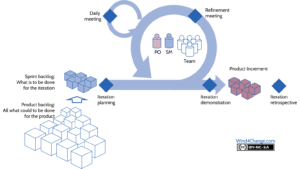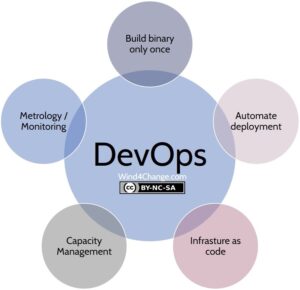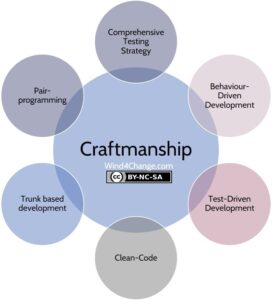Scrum introduction
What is Scrum? What are the 6 artifacts, 3 roles and the 5 ceremonies in this method? Learn about daily meeting, spring planning, Scrum Master…
Scrum introduction Read More »

In this category of posts, find out the principles of Agile, and Scrum and Kanban frameworks! Understand the ceremonies, roles and artifacts of these methods. Dig up Product Owner and Proxy-PO.
What is Continuous Delivery? Find out about the two areas of CD: Craftsmanship and DevOps.
Where does Agile come from? How the 4 Agile Values of the Manifesto address complexity and uncertainty? What are the Agile principles and the related value proposal?
What are the 6 artifacts in Scrum? What are the 3 roles in this framework? What are the 5 ceremonies in this method?
How Kanban work in progress differs from Scrum? What are the 4 principles and the 6 practices in Kanban framework? What are the usual artifacts, ceremonies and roles implemented in Kanban? When to use Kanban method and when to use Scrum?
What are the Product Owner anti-patterns? When to have a Proxy Product Owner? What a Product Owner can and cannot delegate to the Proxy-PO? Who can be Proxy-PO?

DevOps is not just the automation of the life-cycle of software from the build to the deployment in production. It is first a tight collaboration between developers and production operators for a seamless handover from development to production.
Find here the explanation of DevOps principles: build binary once, automate deployment, infrastructure as code, capacity management, metrology and monitoring.

Craftsmanship is the state of art software development. But it is more than writing code meeting business and technical requirements like security or performance.
Find here the explanation of Craftsmanship principles: comprehensive testing strategy, behavior-driven development, test-driven development, clean-code, trunk based development and pair-programming.
What is Scrum? What are the 6 artifacts, 3 roles and the 5 ceremonies in this method? Learn about daily meeting, spring planning, Scrum Master…
Scrum introduction Read More »
Where does Agile come from? How the 4 Agile Values of the Manifesto address complexity and uncertainty? What are the principles and the related value proposal?
Agile Introduction Read More »